Healthy ALT Levels: Understanding the Alanine Aminotransferase Test
What is the purpose of an ALT test. How is the ALT test procedure performed. What do ALT test results indicate. Why are healthy ALT levels important for liver function. When should you consider getting an ALT test.
What is ALT and Why is it Important?
Alanine Aminotransferase (ALT) is a crucial enzyme primarily found in the liver. It plays a vital role in metabolism and protein breakdown. Understanding ALT levels is essential for assessing liver health and function.
The liver, as the body’s largest gland, performs several critical functions:
- Protein synthesis
- Vitamin and iron storage
- Toxin removal from the bloodstream
- Bile production for digestion
ALT is one of the enzymes that aids in these processes, particularly in breaking down proteins for easier absorption. When liver cells are damaged or inflamed, ALT is released into the bloodstream, causing serum ALT levels to rise. This elevation is often the first indicator of liver issues, even before other symptoms manifest.

The ALT Test: Purpose and Indications
The ALT test, also known as the serum glutamic-pyruvic transaminase (SGPT) test or alanine transaminase test, is a valuable diagnostic tool. But when is an ALT test necessary?
Healthcare providers may order an ALT test if a patient exhibits symptoms of liver disease, such as:
- Jaundice (yellowing of eyes or skin)
- Dark urine
- Nausea and vomiting
- Pain in the right upper quadrant of the abdomen
Additionally, ALT tests are often part of routine check-ups or recommended for individuals with risk factors for liver disease, including:
- Family history of liver problems
- Heavy alcohol consumption
- Exposure to hepatitis
- Certain medications
- Diabetes
Other Reasons for ALT Testing
Beyond initial diagnosis, ALT tests serve several purposes:
- Monitoring the progression of existing liver diseases
- Assessing the need to initiate treatment for liver conditions
- Evaluating the effectiveness of ongoing liver disease treatments
The ALT Test Procedure: What to Expect
The ALT test is a straightforward blood test that requires minimal preparation. However, it’s crucial to inform your healthcare provider about any medications you’re taking, as some may affect ALT levels.

The procedure typically involves the following steps:
- Skin cleansing with an antiseptic
- Application of an elastic band to make veins more visible
- Needle insertion for blood collection
- Removal of the needle and application of a bandage
- Blood sample sent to a laboratory for analysis
While the ALT test is generally safe, some rare complications may occur, such as excessive bleeding, hematoma formation, or infection at the puncture site. These risks are minimal when the procedure is performed by a trained healthcare professional.
Interpreting ALT Test Results: Normal vs. Abnormal Levels
Understanding ALT test results is crucial for assessing liver health. But what constitutes normal ALT levels?
According to the American College of Gastroenterology, normal ALT values for individuals without liver disease risk factors are:
- Males: 29 to 33 international units per liter (IU/L)
- Females: 19 to 25 IU/L
It’s important to note that these ranges can vary depending on the laboratory and may be influenced by factors such as age and sex. Always discuss your specific results with your healthcare provider for accurate interpretation.

Abnormal ALT Results: What They Mean
Elevated ALT levels often indicate liver damage or inflammation. Conditions that may cause increased ALT include:
- Hepatitis (liver inflammation)
- Cirrhosis (liver scarring)
- Fatty liver disease
- Liver cancer
- Medication-induced liver injury
While an ALT test can detect liver damage, it cannot determine the extent of the damage or predict its progression. For this reason, healthcare providers often order additional tests to gain a comprehensive understanding of liver health.
ALT Test in Conjunction with Other Liver Function Tests
To obtain a more complete picture of liver health, the ALT test is frequently performed alongside other liver enzyme tests. This comprehensive approach provides healthcare providers with more specific information about potential liver problems.
Common liver function tests that may be ordered in conjunction with ALT include:
- Aspartate aminotransferase (AST)
- Alkaline phosphatase (ALP)
- Gamma-glutamyl transferase (GGT)
- Bilirubin
- Albumin
By analyzing the results of these tests collectively, healthcare providers can more accurately diagnose liver conditions and develop appropriate treatment plans.

Maintaining Healthy ALT Levels: Lifestyle and Prevention
While some factors affecting ALT levels are beyond our control, there are several lifestyle choices that can help maintain healthy liver function and ALT levels:
- Limit alcohol consumption
- Maintain a healthy weight
- Exercise regularly
- Eat a balanced diet rich in fruits, vegetables, and whole grains
- Avoid unnecessary medications and follow prescribed dosages
- Get vaccinated against hepatitis A and B
- Practice safe sex to prevent hepatitis transmission
By adopting these healthy habits, individuals can reduce their risk of liver disease and maintain optimal ALT levels.
When to Seek Medical Attention for ALT Concerns
While routine ALT testing is important for preventive care, certain situations may warrant immediate medical attention. When should you consult a healthcare provider about ALT levels?
- If you experience persistent symptoms of liver disease
- After receiving abnormal ALT test results
- If you have a family history of liver disease
- When starting new medications that may affect liver function
- If you have been exposed to hepatitis or other liver-damaging substances
Early detection and intervention are crucial in managing liver conditions effectively. Don’t hesitate to reach out to your healthcare provider if you have concerns about your liver health or ALT levels.

The Future of Liver Health Assessment: Beyond ALT
As medical research advances, new methods for assessing liver health are emerging. How might liver function testing evolve in the future?
Researchers are exploring several promising avenues:
- Non-invasive imaging techniques for liver fibrosis assessment
- Genetic markers for predicting liver disease susceptibility
- Advanced blood tests that provide more detailed liver health information
- Artificial intelligence algorithms for interpreting complex liver test results
These developments may lead to more accurate and comprehensive liver health assessments, potentially allowing for earlier detection and more personalized treatment approaches.
The Role of Personalized Medicine in Liver Health
As our understanding of individual genetic variations and their impact on liver function grows, personalized medicine is becoming increasingly relevant in liver health management. This approach takes into account an individual’s unique genetic makeup, lifestyle factors, and environmental exposures to tailor prevention strategies and treatment plans.

Some potential applications of personalized medicine in liver health include:
- Customized ALT reference ranges based on individual factors
- Targeted screening protocols for high-risk individuals
- Personalized dietary and lifestyle recommendations
- Tailored medication regimens to minimize liver damage risk
As research in this field progresses, we can expect more sophisticated and individualized approaches to liver health management in the future.
Global Perspectives on ALT Testing and Liver Health
Liver health is a global concern, with varying approaches to ALT testing and liver disease management across different countries and healthcare systems. How do global perspectives on ALT testing differ?
In some regions, ALT testing is a routine part of annual health check-ups, while in others, it may only be performed when liver disease is suspected. Cultural factors, economic considerations, and healthcare policies all play a role in these differences.
Some global trends in ALT testing and liver health management include:

- Increased awareness of non-alcoholic fatty liver disease in developing countries
- Growing emphasis on hepatitis screening and prevention in high-prevalence areas
- Integration of traditional medicine practices with modern liver health assessments in some cultures
- Global initiatives to improve access to liver function testing in underserved regions
As our world becomes increasingly interconnected, sharing knowledge and best practices in liver health management across different cultures and healthcare systems becomes ever more important.
The Impact of Climate Change on Liver Health
Emerging research suggests that climate change may have implications for liver health and ALT levels. How might environmental changes affect liver function?
Several potential impacts have been identified:
- Increased prevalence of certain liver diseases due to changes in food and water quality
- Altered distribution of vector-borne diseases that can affect the liver
- Higher rates of heat-related liver stress in vulnerable populations
- Changes in alcohol consumption patterns due to climate-related socioeconomic factors
As we continue to grapple with the effects of climate change, monitoring liver health indicators like ALT may become increasingly important in understanding and mitigating these impacts.

Empowering Patients: The Role of Health Literacy in ALT Testing
Understanding ALT test results and their implications is crucial for patients to take an active role in their liver health. How can we improve health literacy regarding ALT testing and liver function?
Several strategies can be employed to enhance patient understanding:
- Developing clear, accessible educational materials about ALT and liver health
- Encouraging open communication between healthcare providers and patients
- Utilizing digital health tools to help patients track and interpret their ALT levels over time
- Promoting community health initiatives focused on liver wellness
- Incorporating liver health education into school health curriculums
By improving health literacy, we can empower individuals to make informed decisions about their liver health and actively participate in preventive care strategies.
The Psychological Impact of ALT Testing
While ALT testing is a valuable tool for assessing liver health, it’s important to consider the psychological impact of these tests on patients. How can healthcare providers address the anxiety and stress that may accompany ALT testing?

Some approaches to mitigate psychological stress include:
- Providing clear, compassionate explanations of test results and their implications
- Offering counseling services for patients dealing with liver health concerns
- Emphasizing the role of lifestyle changes in improving liver health
- Connecting patients with support groups or peer mentors
- Encouraging a holistic approach to health that considers both physical and mental well-being
By addressing the psychological aspects of ALT testing and liver health management, healthcare providers can support patients in maintaining both their physical and emotional well-being.
ALT (Alanine Aminotransferase) Test: Purpose, Procedure, and Results
An alanine aminotransferase (ALT) test measures the level of the enzyme ALT in your blood. This test can help doctors evaluate liver function or determine the underlying cause of a liver problem.
ALT is an enzyme that is found mostly in the liver. The liver is the body’s largest gland. It has several important functions, including:
- making proteins
- storing vitamins and iron
- removing toxins from your blood
- producing bile, which aids in digestion
Proteins called enzymes help the liver break down other proteins so your body can absorb them more easily. ALT is one of these enzymes. It plays a crucial role in metabolism, turning food into energy. The ALT test is often part of an initial screening for liver disease.
ALT is normally found inside liver cells. However, when your liver is damaged or inflamed, ALT can be released into your bloodstream. This causes serum ALT levels to rise.
An increase in ALT is often the first sign of a liver problem, and ALT is often elevated before other symptoms appear.
An ALT test is also known as a serum glutamic-pyruvic transaminase (SGPT) test or an alanine transaminase test.
The ALT test is usually used to determine whether someone has liver injury or failure. Your doctor may order an ALT test if you’re having symptoms of liver disease, including:
- jaundice, which is yellowing of your eyes or skin
- dark urine
- nausea
- vomiting
- pain in the right upper quadrant of your abdomen
Liver damage generally causes an increase in ALT levels. The ALT test can evaluate the levels of ALT in your bloodstream, but it can’t show how much liver damage there is or how much fibrosis, or scarring, is present.
The test also can’t predict how severe the liver damage will become.
An ALT test is often done with other liver enzyme tests. Checking ALT levels along with levels of other liver enzymes can provide your doctor with more specific information about a liver problem.
An ALT test may be part of a routine checkup or requested if someone has risk factors for liver disease, including:
- family history
- heavy alcohol use
- exposure to hepatitis
- taking certain medications
- diabetes
Other reasons to perform an ALT test include:
- monitoring the progression of liver diseases, such as hepatitis or liver failure
- assessing whether treatment for liver disease should be started
- evaluating how well treatment is working
An ALT test doesn’t require any special preparation. However, you should tell your doctor about any prescription or over-the-counter medications you’re taking. Some medications may affect the levels of ALT in your blood.
Your doctor might tell you to avoid taking certain medications for a period of time before the test.
An ALT test involves taking a small sample of blood, as outlined here:
- A healthcare professional uses an antiseptic to clean your skin in the area where they will take the sample.

- They will tie an elastic band around your upper arm, which stops the flow of blood and makes the veins in your arm more visible.
- Once they find a vein, they will insert a needle. This may cause a brief pinching or stinging sensation. The blood is drawn into a tube attached to the end of the needle. In some cases, more than one tube may be required.
- After enough blood has been collected, the healthcare professional removes the elastic band and the needle. They place a piece of cotton or gauze over the puncture site and cover that with a bandage or tape to keep it in place.
- The blood sample is sent to a laboratory for analysis.
- The laboratory sends the test results to your doctor. Your doctor may schedule an appointment with you to explain the results in more detail.
An ALT is a simple blood test with few risks. Bruising can sometimes occur in the area where the needle was inserted. The risk of bruising can be minimized by applying pressure to the injection site for several minutes after the needle is removed.
In very rare cases, the following complications can occur during or after an ALT test:
- excessive bleeding where the needle was inserted
- an accumulation of blood beneath your skin, which is called a hematoma
- lightheadedness or fainting at the sight of blood
- an infection at the puncture site
Normal results
According to the American College of Gastroenterology, the normal value for ALT in blood for people without risk factors for liver disease ranges from 29 to 33 international units per liter (IU/L) for males and 19 to 25 IU/L for females. This value can vary depending on the lab.
This range can be affected by certain factors, including sex and age. It’s important to discuss your specific results with your doctor.
Abnormal results
Higher-than-normal levels of ALT can indicate liver damage. Increased levels of ALT may be a result of:
- hepatitis, which is an inflammatory condition of the liver
- cirrhosis, which is severe scarring of the liver
- death of liver tissue
- a tumor or cancer in the liver
- a lack of blood flow to the liver
- hemochromatosis, which is a disorder that causes iron to build up in the body
- mononucleosis, which is an infection usually caused by the Epstein-Barr virus
- diabetes
Most lower ALT results indicate a healthy liver. However, studies have shown that lower-than-normal results have been related to increased long-term mortality. Discuss your numbers specifically with your doctor if you’re concerned about a low reading.
However, studies have shown that lower-than-normal results have been related to increased long-term mortality. Discuss your numbers specifically with your doctor if you’re concerned about a low reading.
If your test results indicate liver damage or disease, you may need more testing to determine the underlying cause of the problem and the best way to treat it.
ALT (Alanine Aminotransferase) Test: Purpose, Procedure, and Results
An alanine aminotransferase (ALT) test measures the level of the enzyme ALT in your blood. This test can help doctors evaluate liver function or determine the underlying cause of a liver problem.
ALT is an enzyme that is found mostly in the liver. The liver is the body’s largest gland. It has several important functions, including:
- making proteins
- storing vitamins and iron
- removing toxins from your blood
- producing bile, which aids in digestion
Proteins called enzymes help the liver break down other proteins so your body can absorb them more easily. ALT is one of these enzymes. It plays a crucial role in metabolism, turning food into energy. The ALT test is often part of an initial screening for liver disease.
ALT is one of these enzymes. It plays a crucial role in metabolism, turning food into energy. The ALT test is often part of an initial screening for liver disease.
ALT is normally found inside liver cells. However, when your liver is damaged or inflamed, ALT can be released into your bloodstream. This causes serum ALT levels to rise.
An increase in ALT is often the first sign of a liver problem, and ALT is often elevated before other symptoms appear.
An ALT test is also known as a serum glutamic-pyruvic transaminase (SGPT) test or an alanine transaminase test.
The ALT test is usually used to determine whether someone has liver injury or failure. Your doctor may order an ALT test if you’re having symptoms of liver disease, including:
- jaundice, which is yellowing of your eyes or skin
- dark urine
- nausea
- vomiting
- pain in the right upper quadrant of your abdomen
Liver damage generally causes an increase in ALT levels. The ALT test can evaluate the levels of ALT in your bloodstream, but it can’t show how much liver damage there is or how much fibrosis, or scarring, is present.
The ALT test can evaluate the levels of ALT in your bloodstream, but it can’t show how much liver damage there is or how much fibrosis, or scarring, is present.
The test also can’t predict how severe the liver damage will become.
An ALT test is often done with other liver enzyme tests. Checking ALT levels along with levels of other liver enzymes can provide your doctor with more specific information about a liver problem.
An ALT test may be part of a routine checkup or requested if someone has risk factors for liver disease, including:
- family history
- heavy alcohol use
- exposure to hepatitis
- taking certain medications
- diabetes
Other reasons to perform an ALT test include:
- monitoring the progression of liver diseases, such as hepatitis or liver failure
- assessing whether treatment for liver disease should be started
- evaluating how well treatment is working
An ALT test doesn’t require any special preparation. However, you should tell your doctor about any prescription or over-the-counter medications you’re taking. Some medications may affect the levels of ALT in your blood.
However, you should tell your doctor about any prescription or over-the-counter medications you’re taking. Some medications may affect the levels of ALT in your blood.
Your doctor might tell you to avoid taking certain medications for a period of time before the test.
An ALT test involves taking a small sample of blood, as outlined here:
- A healthcare professional uses an antiseptic to clean your skin in the area where they will take the sample.
- They will tie an elastic band around your upper arm, which stops the flow of blood and makes the veins in your arm more visible.
- Once they find a vein, they will insert a needle. This may cause a brief pinching or stinging sensation. The blood is drawn into a tube attached to the end of the needle. In some cases, more than one tube may be required.
- After enough blood has been collected, the healthcare professional removes the elastic band and the needle. They place a piece of cotton or gauze over the puncture site and cover that with a bandage or tape to keep it in place.

- The blood sample is sent to a laboratory for analysis.
- The laboratory sends the test results to your doctor. Your doctor may schedule an appointment with you to explain the results in more detail.
An ALT is a simple blood test with few risks. Bruising can sometimes occur in the area where the needle was inserted. The risk of bruising can be minimized by applying pressure to the injection site for several minutes after the needle is removed.
In very rare cases, the following complications can occur during or after an ALT test:
- excessive bleeding where the needle was inserted
- an accumulation of blood beneath your skin, which is called a hematoma
- lightheadedness or fainting at the sight of blood
- an infection at the puncture site
Normal results
According to the American College of Gastroenterology, the normal value for ALT in blood for people without risk factors for liver disease ranges from 29 to 33 international units per liter (IU/L) for males and 19 to 25 IU/L for females. This value can vary depending on the lab.
This value can vary depending on the lab.
This range can be affected by certain factors, including sex and age. It’s important to discuss your specific results with your doctor.
Abnormal results
Higher-than-normal levels of ALT can indicate liver damage. Increased levels of ALT may be a result of:
- hepatitis, which is an inflammatory condition of the liver
- cirrhosis, which is severe scarring of the liver
- death of liver tissue
- a tumor or cancer in the liver
- a lack of blood flow to the liver
- hemochromatosis, which is a disorder that causes iron to build up in the body
- mononucleosis, which is an infection usually caused by the Epstein-Barr virus
- diabetes
Most lower ALT results indicate a healthy liver. However, studies have shown that lower-than-normal results have been related to increased long-term mortality. Discuss your numbers specifically with your doctor if you’re concerned about a low reading.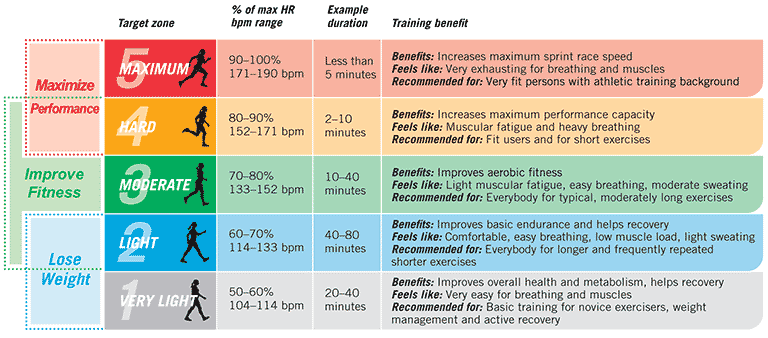
If your test results indicate liver damage or disease, you may need more testing to determine the underlying cause of the problem and the best way to treat it.
what are the norms and what does the deviation mean?
Contents
- 1 Normal ALT and AST values in women: how to assess your liver
- 1.1 ALT and AST – what are they?
- 1.2 Blood test for ALT and AST
- 1.3 Norm of ALT and AST in women
- 1.4 Deviation of ALT and AST from the norm
- 1.5 Causes of increased levels of ALT and AST in women
- 1.6 Pain treatments that cause elevated levels of ALT and AST in women
- 1.6.1 Hepatitis
- 1.6.2 Cirrhosis of the liver
- 1.6.3 Obesity
- 1.6.4 Other diseases
- 1.7 Symptoms of elevated ALT and AST in women
- 1.8 Diagnosis of elevated ALT and AST
- 1.9 What to do if ALT is elevated and AST
- 1.10 Treating Elevated ALT and AST
- 1.
 11 Nutrition for Elevated ALT and AST
11 Nutrition for Elevated ALT and AST- 1.11.1 Introduction
- 1.11.2 What to Eat
- 1.11.3 What to Do avoid
- 1.11.4 Cooking tips
- 1.11.5 Conclusion
- 1.12 Prevention of elevated ALT and AST
- 1.13 Consequences of elevated ALT and AST
- 1.14 Comparison with elevated blood levels of other indicators
- 1.15 Analysis ALT and AST for hepatitis
- 1.15.1 Alanine aminotransferase and Aspartate aminotransferase
- 1.15.2 How to prepare for an ALT and AST test
- 1.15.3 What the test results mean
- 1.16 Effects of ALT and AST on pregnancy
- 1.17 When to see a doctor if ALT and AST levels are elevated
- 1.18 Related videos:
- 1.19 Q&A:
- 9000 5
- 1.19.0.1 What is Alt and Ast and why are these indicators needed in analyzes in women?
- 1.19.0.2 What are the normal levels of Alt and Ast in women?
- 1.19.0.3 What can cause an increase in Alt in women?
- 1.
 19.0.4 What causes an increase in the Ast level in women?
19.0.4 What causes an increase in the Ast level in women? - 1.19.0.5 What does low Alt mean in women?
- 1.19.0.6 What can it mean if the level of Alt and Ast is simultaneously elevated in women?
- 1.19.0.7 Can a low Ast level in women indicate the absence of liver problems?
- 1.19.0.8 How long do elevated levels of Alt and Ast persist in women after drinking alcohol?
Find out which ALT and AST values are normal for women. Useful information about the functions of these indicators and the causes of deviations from the norm.
Alt and Ast are enzymes that are responsible for the functioning of the liver. If their blood levels are elevated, this may indicate a liver problem. A blood test for alt and ast is usually ordered in case of suspected liver disease, but what does a deviation in the level of these enzymes mean in women?
ALT and AST blood levels in women depend on many factors, including age, sex, disease, and medication. But in general, the alt level in women should not exceed 31 units/l, and the ast level should not exceed 34 units/l.
But in general, the alt level in women should not exceed 31 units/l, and the ast level should not exceed 34 units/l.
If you have been tested for alt and ast and your blood levels of these enzymes are elevated, be sure to discuss the results with your doctor. He will be able to assess your ALT and AST levels in the context of your health and determine if additional testing or treatment is needed.
ALT and AST – what is it?
Alanine aminotransferase (ALT) and aspartate aminotransferase (AST) are enzymes found inside liver cells. If liver cells are damaged or destroyed, these enzymes enter the bloodstream. Therefore, an increase in the level of ALT and AST in the blood may indicate the presence of problems with the liver or other organs.
ALT and AST are often used together in the diagnosis of liver diseases such as hepatitis and cirrhosis. These enzymes can also be elevated in myocardial infarction, rheumatic diseases, and other problems.
ALT and AST blood test
ALT (alianine aminotransferase) and AST (aspartate aminotransferase) blood test is one of the most common methods for diagnosing diseases of the liver and heart._0.jpg) Both are enzymes that are normally found inside the cells of the liver and heart, but if these organs become damaged or inflamed, ALT and AST are released from the cells into the blood, causing their blood levels to rise.
Both are enzymes that are normally found inside the cells of the liver and heart, but if these organs become damaged or inflamed, ALT and AST are released from the cells into the blood, causing their blood levels to rise.
ALT is routinely screened to diagnose liver diseases such as hepatitis, cirrhosis, and liver cancer. ALT levels can also be elevated with certain medications, jaundice, gallbladder disease, and inflammatory diseases of the biliary tract.
Elevated levels of ALT and AST in the blood may indicate a specific disease, but these indicators cannot indicate a specific condition. To detect the disease, additional research and examinations are necessary.
In general, elevated levels of ALT and AST usually indicate damage to some organs in the body. If you are found to have elevated levels of ALT or AST, you should undergo further tests to find out which organs are damaged and begin treatment under the guidance of a qualified physician.
ALT and AST norm in women
Alanine aminotransferase (ALT) and aspartate aminotransferase (AST) are indicators of liver function.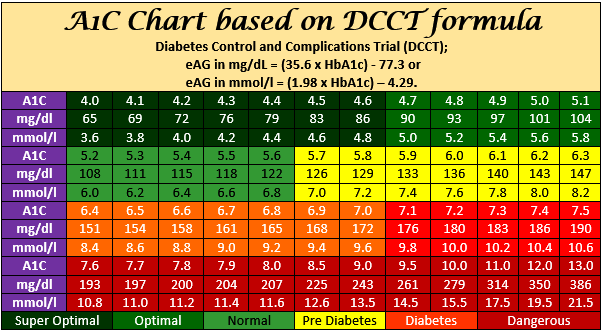 Normal blood levels of these enzymes may vary depending on the methodology of the laboratory, as well as the age, sex, and weight of the patient. However, on average, in women, ALT and AST have the following norms:
Normal blood levels of these enzymes may vary depending on the methodology of the laboratory, as well as the age, sex, and weight of the patient. However, on average, in women, ALT and AST have the following norms:
- ALT: up to 34 units/l;
- AST: up to 31 units/l.
If a woman’s ALT and AST levels are higher than normal, this may indicate liver problems such as inflammation, fatty degeneration, or cirrhosis. However, another underlying cause may also be present, such as alcohol or drug poisoning, drug injection, or heart or muscle disease.
If you have been prescribed ALT and AST tests and find that these levels are abnormal, you should consult your doctor to determine the cause and prescribe the appropriate treatment.
ALT and AST abnormal
Alanine aminotransferase (ALT) and aspartate aminotransferase (AST) are enzymes that help the body make proteins. Normal levels of ALT and AST in women can vary, but are usually in the range of 7-56 units/L for ALT and 10-40 units/L for AST.
Abnormal levels of ALT and AST may indicate the presence of liver disease such as hepatitis or cirrhosis. If the level remains elevated for a long time, it can lead to serious complications, including liver failure or liver cancer.
ALT and AST levels may also be elevated in other conditions such as myocardial infarction, pneumonia, or myopathies. This can help diagnose these conditions and track their treatment.
If the levels of ALT and AST strongly deviate from the norm, it is recommended to consult a doctor for additional examination and determination of the cause of such deviation. Early detection and treatment of diseases that can lead to elevated levels of ALT and AST can help maintain health and prevent serious complications.
Causes of increased levels of ALT and AST in women
AST (aspartate aminotransferase) and ALT (alanine aminotransferase) are enzymes that are involved in the process of amino acid metabolism. They are found in the cells of the liver, heart muscle, kidneys and other tissues of the body. If the level of ALT and AST is elevated in a woman, this may indicate the presence of the following reasons:
If the level of ALT and AST is elevated in a woman, this may indicate the presence of the following reasons:
- Liver diseases: elevated levels of ALT and AST may indicate the presence of hepatitis, liver cirrhosis, fatty degeneration and other pathological changes. At the same time, ALT levels may rise earlier than AST.
- Taking medications: Many medications can increase blood levels of ALT and AST. This is especially true of hepatotoxic drugs that have a negative effect on the liver.
- Alcoholic liver disease: The presence of an alcoholic mixture may lead to elevated levels of ALT and AST.
- Myocarditis, hypoxia of the heart muscle: when the heart muscle is affected, AST levels can rise much faster than ALT.
- Non-specific elevation: ALT and AST levels may be elevated with various infectious diseases, trauma and surgery.
In any case, if the level of ALT and AST in a woman is elevated, this requires a mandatory examination and identification of the cause in order to prescribe an effective treatment.
Diseases that cause elevated levels of ALT and AST in women
Hepatitis
Elevated levels of ALT and AST may be associated with hepatitis, an inflammation of the liver that can be caused by viruses, alcohol, drugs, and other factors. In hepatitis, ALT and AST are higher than normal due to damage to liver cells and the release of enzymes into the blood.
Cirrhosis of the liver
Cirrhosis of the liver is characterized by the gradual accumulation of damage to the liver cells, which can cause an increase in the level of ALT and AST. With cirrhosis of the liver, the function of the organ is impaired, which can lead to serious consequences.
Obesity
Obesity can be one of the causes of elevated levels of ALT and AST. Fat accumulates in the liver, which can cause it to malfunction and release enzymes into the blood.
Other diseases
Elevated levels of ALT and AST may also be associated with rarer diseases such as myopathy, muscle wasting, thrombosis, myocardial infarction and others.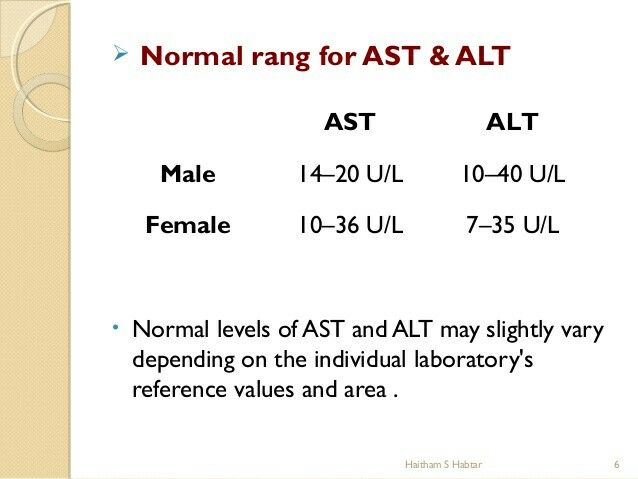 You need to see a doctor for an accurate diagnosis and treatment.
You need to see a doctor for an accurate diagnosis and treatment.
Symptoms of elevated ALT and AST levels in women
ALT (alanine aminotransferase) and AST (aspartate aminotransferase) are enzymes that are found inside the cells of the liver and other organs. Elevated levels of ALT and AST in the blood can indicate problems with the liver, heart, muscles, and other organs.
In women, elevated levels of ALT and AST may present with the following symptoms:0008
If If you notice any of these symptoms, you should see a doctor for diagnosis and treatment. He may order blood tests for ALT and AST levels, as well as other types of tests to identify possible problems with the body.
Do not ignore the symptoms of elevated levels of ALT and AST, as these enzymes can indicate serious diseases that require competent medical attention.
Diagnosis of elevated levels of ALT and AST
A special blood test is performed to detect the level of hormones ALT and AST. This test can help diagnose various diseases of the liver, heart, and muscles.
ALT and AST levels may be elevated in the presence of viral hepatitis, alcoholic or toxic hepatitis, cirrhosis of the liver, infectious mononucleosis, heart and muscle disease. In some cases, an increase in hormone levels may be due to medications taken or tissue damage resulting from an injury.
If ALT and AST levels are higher than normal, further testing is needed to determine the cause of the deviation. Do not panic in advance, because elevated hormone levels do not always indicate a serious illness.
It is important to understand that self-monitoring of ALT and AST levels at home is not sufficient to establish a diagnosis.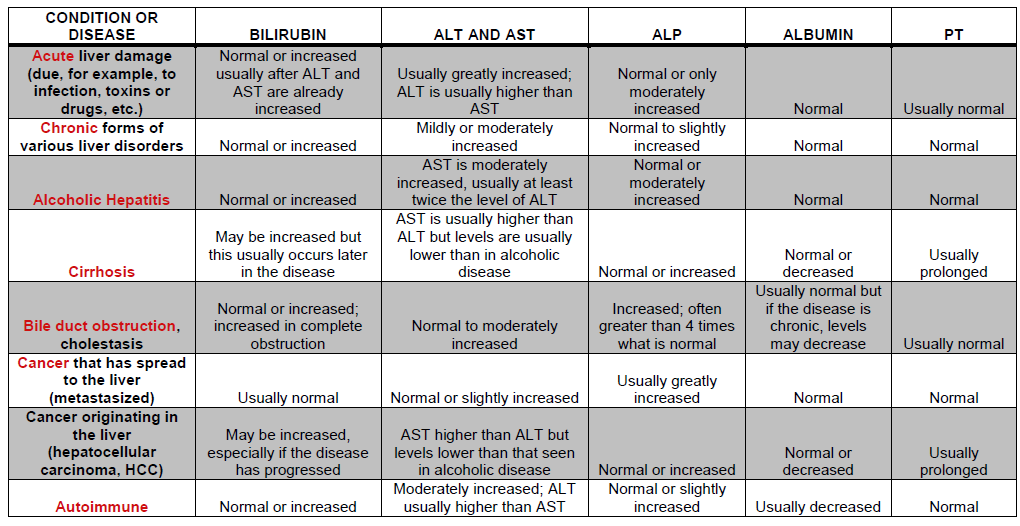 To do this, you should consult a doctor and perform the recommended tests.
To do this, you should consult a doctor and perform the recommended tests.
What to do with elevated levels of ALT and AST
If you have been diagnosed with elevated levels of ALT and AST in the blood, do not panic, but do not ignore this fact either. First you need to determine the reason for such a deviation. Usually, elevated levels of ALT and AST indicate complications in the liver.
If elevated levels of ALT and AST are caused by a disease or infection, then the doctor may prescribe appropriate treatment, which is aimed at eliminating the reasons for the increase in these levels.
However, sometimes elevated levels of ALT and AST may indicate the presence of chronic diseases of the liver or other organs. In this case, it is necessary to undergo an examination to determine the causes of this condition and prescribe a suitable treatment.
To lower your ALT and AST levels, you need to follow a proper diet, stop bad habits, take the right medications, and have regular medical checkups.
In any case, ALT and AST levels should be monitored regularly. If you find deviations from the norm, you should consult a doctor in a timely manner and undergo an additional examination to find out the causes and prevent possible complications.
Treatment of elevated ALT and AST
As markers of liver damage, ALT and AST are important indicators of liver disease. If ALT and AST levels are high, treatment depends on the underlying cause of the condition.
If elevated levels of ALT and AST are due to alcoholic or viral hepatitis, then the main treatment is the treatment of the underlying disease. In cases of liver failure, increased protein intake and dietary elasticity may be prescribed.
If elevated levels of ALT and AST are associated with medication or supplements, then these drugs should be discontinued. You may have to replace them with safer alternatives.
For people with elevated ALT and AST levels, it is imperative to control alcohol consumption and the abuse of fatty, rich foods.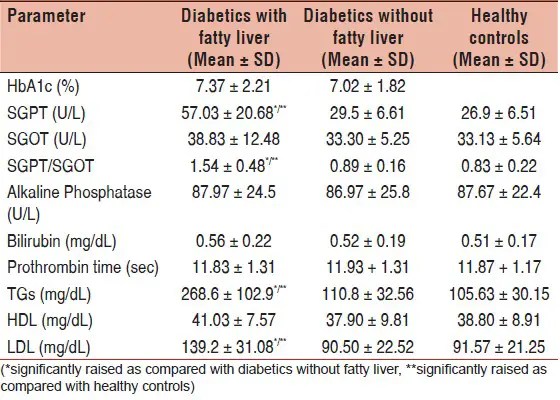
Based on the above, you need to understand that elevated levels of ALT and AST require careful consideration and analysis of the causes. Only then can you find the appropriate treatment and make the necessary adjustments in your lifestyle and diet.
Nutrition with elevated ALT and AST levels
Introduction
Women with elevated ALT and AST levels should pay attention to their diet. Diet can have a big impact on the levels of these enzymes in the blood, so it is recommended to follow certain rules when compiling your daily menu.
What to eat
When ALT and AST levels are elevated, a healthy diet is given special attention. Women should eat more fresh fruits and vegetables, as well as protein foods such as fish, chicken, eggs, and cottage cheese. It is also recommended to drink plenty of fluids, including clean water.
What to avoid
Women should limit their intake of fatty and fried foods, as well as sweets and alcohol, to avoid elevated ALT and AST levels.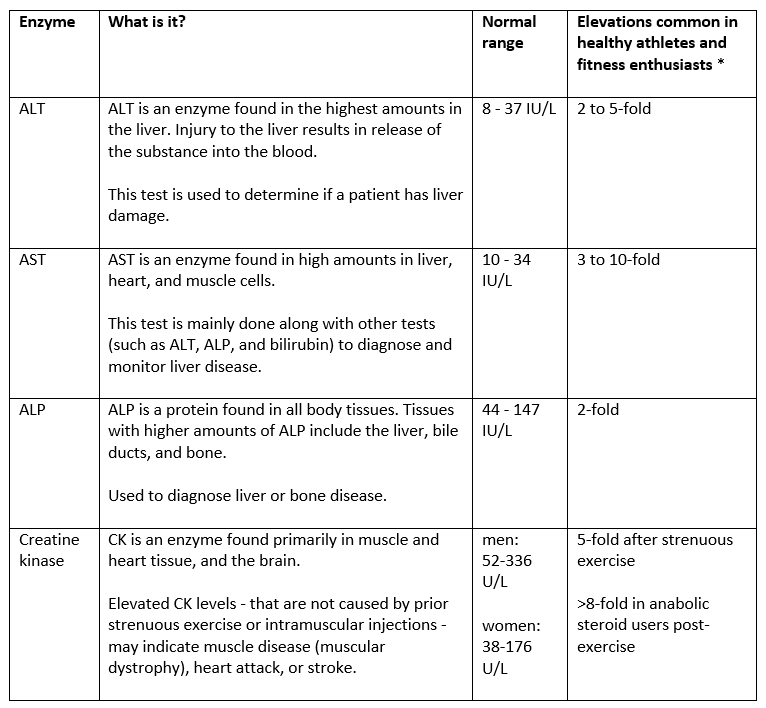 In addition, it is recommended to avoid too much coffee and strong tea.
In addition, it is recommended to avoid too much coffee and strong tea.
Cooking Tips
One way to preserve the health benefits of food is to prepare it properly. Women should prefer steamed or grilled dishes. Also, if possible, it is necessary to exclude frying in oil and give preference to cold appetizers and salads.
Conclusion
By following simple healthy dietary guidelines, women can lower their blood levels of ALT and AST. Regular consumption of fresh fruits and vegetables, protein foods, limiting fatty, fried and sugary foods, and proper cooking will help maintain a healthy liver and improve overall body health.
Prevention of elevated ALT and AST levels
Maintaining a healthy liver and preventing elevated ALT and AST levels in women requires a healthy lifestyle:
- Avoid alcohol and nicotine;
- Watch your diet and avoid fatty, fried and salty foods;
- Maintain a healthy weight and avoid excess weight;
- Exercise regularly;
- Avoid stress and nervous overload;
- Monitor the level of hormones in the body, especially when taking hormonal drugs.

It is also recommended to undergo regular medical examinations and seek medical attention at the first symptoms of liver disease: pain in the right hypochondrium, nausea, vomiting, jaundice, loss of appetite and drowsiness.
If the level of ALT and AST in the blood of a woman is elevated, then it is necessary to consult a doctor for additional examination and determination of the cause of the deviation.
Sample diet to prevent elevated ALT and ASTV Time Meal
| 8:00 | Breakfast: oatmeal with water, apple, green tea |
| 11: 00 | Snack: fruit yogurt, nuts |
| 2:00 pm | Lunch: grilled chicken breast, steamed vegetables, slice of rye bread, water |
| 20:00 | Dinner: steamed fish, vegetable salad, slice of rye bread, water |
ALT and AST levels
Elevated levels of ALT and AST usually indicate liver dysfunction. Such violations can be caused by various reasons: from alcohol or drug intoxication to viral infections or cancer.
Such violations can be caused by various reasons: from alcohol or drug intoxication to viral infections or cancer.
One of the first signs of elevated levels of ALT and AST are yellowing eyes and skin, which indicate a violation of the outflow of bile. Other signs may include pain in the right side, bloating, nausea, vomiting, and general weakness.
These signs should not be ignored, as elevated levels of ALT and AST can lead to serious consequences. For example, it can cause cirrhosis of the liver, which in turn can lead to liver cancer and other dangerous diseases. Therefore, if suspicious symptoms appear, you should consult a doctor and undergo an appropriate examination.
- Suspected or developing acute hepatitis
- Confirmed chronic hepatitis
- Suspected gallbladder disease
- May be caused by certain drugs or high alcohol intake
If found elevated high levels of ALT and AST, measures must be taken to eliminate the cause of its occurrence. For this, special medications, diet, avoidance of alcohol and other suitable measures can be prescribed.
For this, special medications, diet, avoidance of alcohol and other suitable measures can be prescribed.
Comparison with elevated levels of other blood parameters
The presence of elevated levels of alanine aminotransferase (Alt) and aspartate aminotransferase (AST) can be caused not only by diseases of the liver, cardiovascular system and muscle tissue, but also by the presence of other indicators in the blood, such as iron, glucose, cholesterol and others.
When comparing the levels of Alt and Ast with other indicators, it is necessary to take into account the possible mechanisms for increasing the levels of these enzymes. For example, an increase in the level of Alt and Ast may be associated with a violation of iron metabolism in the body, which leads to its accumulation in the liver and intensive destruction of liver cells.
However, in the presence of elevated levels of Alt and Ast in combination with other indicators, it is necessary to conduct an additional examination to determine the cause of the increase and further treatment.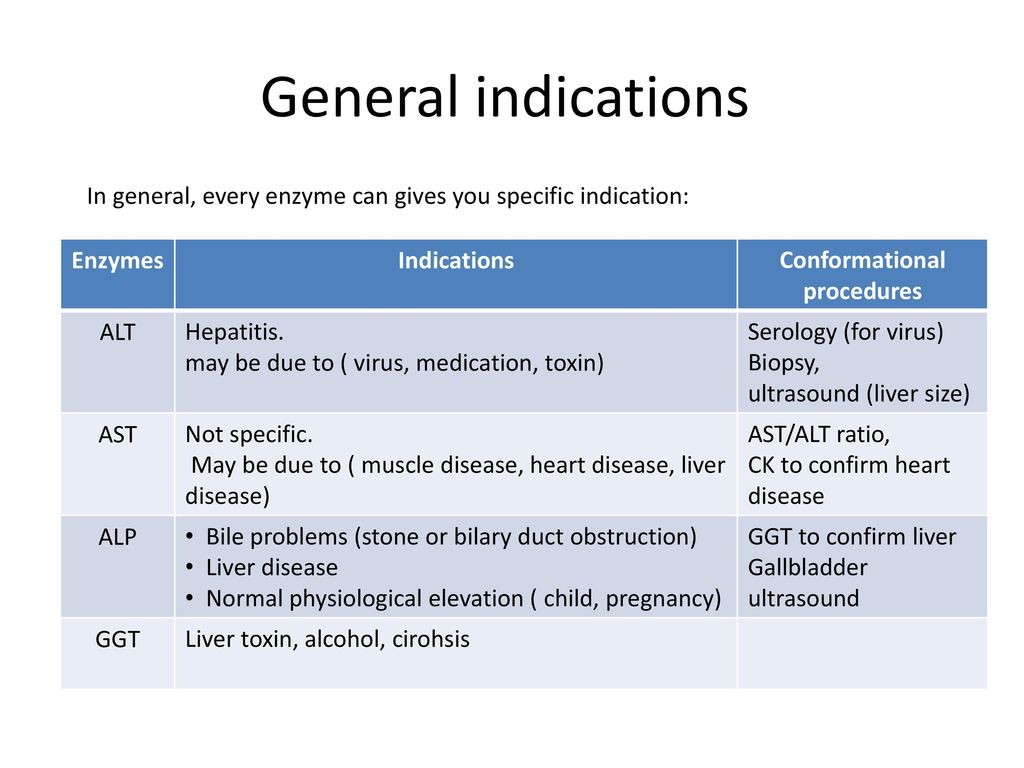
- Elevated blood glucose may indicate diabetes.
- Elevated cholesterol levels may be associated with impaired lipid metabolism in the body.
- Elevated iron levels may indicate the presence of hemochromatosis.
ALT and AST hepatitis test
Alanine aminotransferase and Aspartate aminotransferase
ALT and AST are enzymes that are found inside liver cells. They are involved in the metabolism of amino acids and help the body get energy from food. High levels of ALT and AST can indicate liver problems, which is why they are usually included in a standard CBC.
One of the most common blood tests for ALT and AST levels is a hepatitis test. Hepatitis is an inflammatory disease of the liver that can be caused by infection, alcohol, or toxins. ALT and AST may be elevated in viral hepatitis, and their rise may reflect the degree of liver damage.
How to prepare for an ALT and AST test
To prepare for an ALT and AST test, you must give blood samples. No other special preparatory measures are required. However, alcohol consumption should be limited prior to testing, as alcohol can increase blood levels of ALT and AST.
No other special preparatory measures are required. However, alcohol consumption should be limited prior to testing, as alcohol can increase blood levels of ALT and AST.
What the test results mean
The normal range for ALT and AST blood levels may vary depending on the laboratory that performs the test. Generally, ALT and AST levels should not exceed 30 to 40 units per liter (U/L) in women. If the level of ALT and AST is elevated, then this may indicate a toxic or infectious liver lesion.
If the results of the analysis show high levels of ALT and AST, then it is necessary to consult with your doctor to identify the possible cause of the elevated ALT and AST levels and begin treatment.
The effect of ALT and AST on pregnancy
ALT and AST are indicators that can be measured in the blood of a pregnant woman at different stages of pregnancy. They play an important role in assessing the health of the liver, but can also indicate problems with the heart and muscles.
Studies show that elevated levels of ALT and AST in the blood of a pregnant woman can mean the presence of infection, hepatitis, many other diseases, and also negatively affect the development of the child.
Although elevated levels of ALT and AST alone are not dangerous for pregnancy, if the levels of both are elevated, action must be taken. In this case, the woman should consult a doctor and undergo additional examinations.
In addition, maintaining a healthy lifestyle and proper diet can help reduce the risk of elevated ALT and AST levels. Pregnant women need to pay special attention to their health and monitor the level of these indicators in the blood in order to ensure the health of their child and themselves in general.
When to see a doctor if ALT and AST levels are elevated
If a woman’s blood levels of alanine aminotransferase (ALT) and aspartate aminotransferase (AST) are elevated, it can be a symptom of various diseases of the liver, cardiovascular system and other organs.
If a woman notices symptoms such as fatigue, nausea, jaundice, right upper quadrant tenderness, she should seek immediate medical attention.
It is also recommended that women undergo regular medical examinations in order to identify possible problems of the disease at an early stage.
To diagnose the level of ALT and AST, it is necessary to donate blood for biochemical analysis, which can determine the presence of pathological changes.
If ALT and AST levels are elevated, the doctor may order additional tests to determine the cause of the abnormality and prescribe appropriate treatment.
Video on the topic:
Question-answer:
What are Alt and Ast and why are these indicators needed in the analyzes of women?
Alt (alanine aminotransferase) and Ast (aspartate aminotransferase) are enzymes that are found in liver cells and are involved in amino acid metabolism. Their blood levels help diagnose liver disease and assess liver function. When deviating from the norm, Alt and Ast can indicate various pathologies that need to be identified and treated.
Their blood levels help diagnose liver disease and assess liver function. When deviating from the norm, Alt and Ast can indicate various pathologies that need to be identified and treated.
What are the normal levels of Alt and Ast in women?
Alt norm in women is 10-40 U/l, and Ast norm is 10-30 U/l. However, these values may differ depending on the laboratory that performs the analysis. Therefore, when studying the results, it is necessary to be guided by the standards specified in the laboratory where the analyzes were carried out.
What can cause an increase in Alt in women?
An increase in the level of Alt in the blood in women can be caused by diseases such as viral hepatitis, cirrhosis of the liver, fatty liver, as well as the use of alcohol or toxic drugs. Also, an increase in Alt levels may be associated with muscle damage, along with damage to liver cells.
What causes an increase in the Asth level in women?
An increase in the level of Ast in the blood in women can be caused by liver pathologies (cirrhosis, hepatitis), myocardial infarction, encephalopathy, jaundice. Also, an increase in the level of Ast can be observed in oncological diseases, alcoholism and the use of toxic drugs.
Also, an increase in the level of Ast can be observed in oncological diseases, alcoholism and the use of toxic drugs.
What does low Alt mean in women?
Decrease in the level of Alt in the blood is not a pathology and in itself does not cause any symptoms. However, if the Alt level is reduced, but the Ast level remains normal, then this may indicate a violation of liver function and require further examination and diagnosis.
What can it mean if the level of Alt and Ast is simultaneously elevated in women?
Simultaneous elevation of Alt and Ast may indicate various liver diseases such as hepatitis, cirrhosis or cancer. Also, an increase in the level of Alt and Ast may be associated with dysfunction of other organs, such as skin, muscles and pancreas. The final diagnosis can only be made after a comprehensive examination and exclusion of other pathologies.
Can a low Ast level in women indicate the absence of problems with the liver?
No, a low blood Asth level is not a sufficient criterion for assessing the health of the liver. For a complete diagnosis, it is necessary to conduct a comprehensive examination and analysis of other biochemical blood parameters that will help identify possible pathologies.
For a complete diagnosis, it is necessary to conduct a comprehensive examination and analysis of other biochemical blood parameters that will help identify possible pathologies.
How long do elevated Alt and Ast levels persist in women after drinking alcohol?
Increased levels of Alt and Ast in the blood of women may persist up to 4-5 days after drinking alcohol. The more often and more alcohol is consumed, the longer elevated levels of these indicators persist. Stopping alcohol consumption helps bring Alt and Ast levels back to normal levels. However, if elevated levels of Alt and Ast do not decrease for a long time, additional diagnostics and examination are necessary.
ALT (blood test ALT, Alanine aminotransferase, alanine transaminase, SGPT, Alanine aminotransferase).
Test material
Blood serum
Method of determination
Kinetic UV test (optimized, standardized by DGKC).
Alanine aminotransferase is an enzyme that is produced inside cells. ALT is most active in the liver, less – in the muscles, heart, pancreas. The enzyme takes an active part in the metabolism of amino acids. Catalyzes the transamination reaction between alanine and α-ketoglutarate. Alanine, in turn, is one of the transport forms of ammonia.
ALT is most active in the liver, less – in the muscles, heart, pancreas. The enzyme takes an active part in the metabolism of amino acids. Catalyzes the transamination reaction between alanine and α-ketoglutarate. Alanine, in turn, is one of the transport forms of ammonia.
In laboratory diagnostics, an ALT blood test is used to diagnose and evaluate the effectiveness of therapy for diseases of the liver, less often – of the heart and pancreas.
The liver is an important and multifunctional organ. The liver is a “powerful nutrient sorting station”, where synthetic processes take place and useful substances are formed, which are sent through the bloodstream to various organs and tissues. The liver, like a sponge, absorbs everything harmful and destroys toxins, thereby protecting other vital organs from their effects. This is the main “filter” in our body. Poisons, carcinogens, drugs, microbial toxins are destroyed in the liver, and ammonia, poisonous to cells, is converted into urea, which is excreted from the body with urine.
Moreover, the liver is involved in the formation of the immune response, synthesizes glucose when the body lacks it, participates in the formation of bile acids, without which digestion and absorption of fats is impossible. The liver is unique and extremely important, so it needs to be given as much attention as possible.
Main clinical manifestations of liver diseases:
- Nausea and vomiting.
- Grayish or yellowish skin tone.
- Bitter taste in the mouth.
- Diarrhea.
- Darkening of the color of urine.
- Aching pain in the region (right hypochondrium), which may radiate to the back or right shoulder blade.
What does an ALT blood test mean?
The assay consists of determining the activity of the ALT enzyme. Normally, in a healthy person, the level of ALT in the blood serum is very low and corresponds to the reference values: in women – up to 31 U / l, in men – up to 37 U / l.
When cells containing this enzyme are damaged or destroyed, it enters the bloodstream, and its concentration in it increases.



 11 Nutrition for Elevated ALT and AST
11 Nutrition for Elevated ALT and AST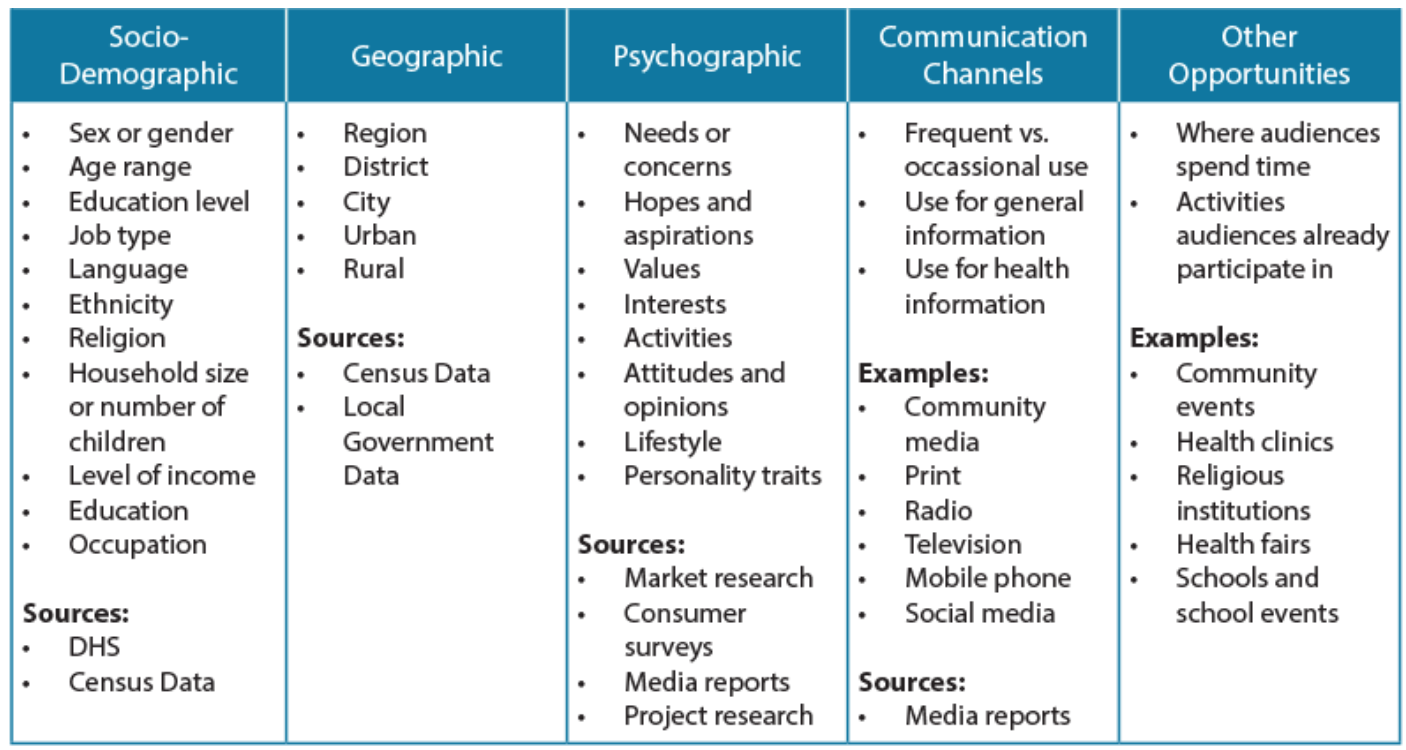 19.0.4 What causes an increase in the Ast level in women?
19.0.4 What causes an increase in the Ast level in women?